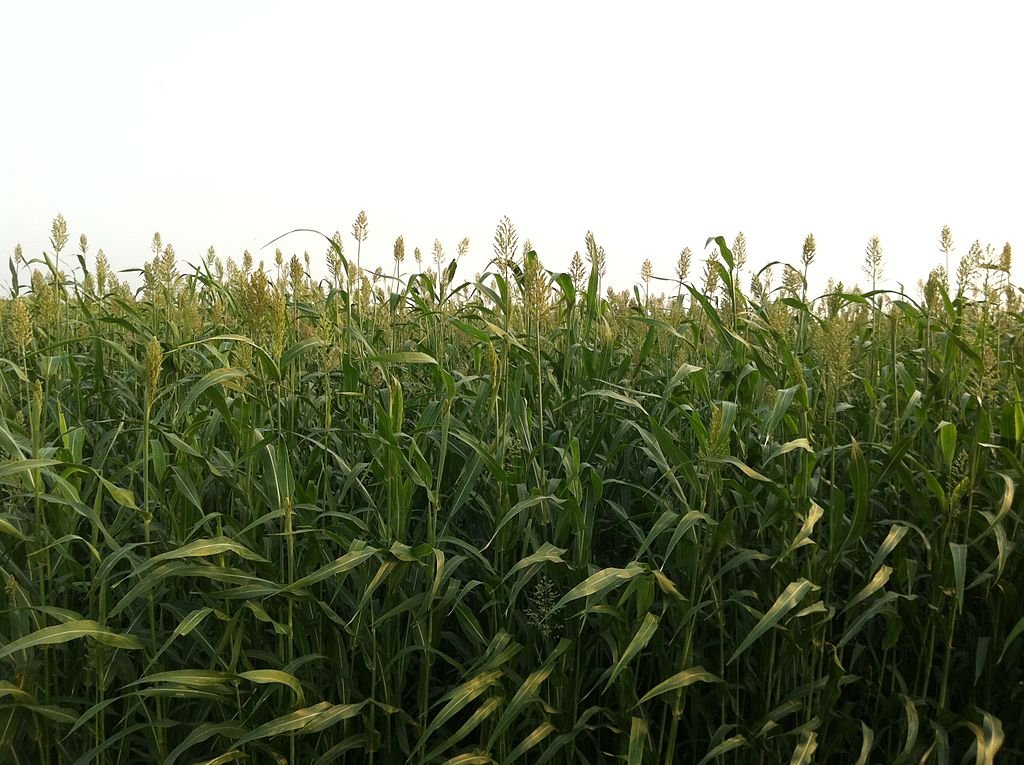
U.S. farmers are ripping out wheat and planting more sorghum after drought parched fields in Texas.
Growers in the state will plant 2.8 million acres of sorghum, according to Wayne Cleveland, the executive director of the Texas Grain Sorghum Association. That compares with 2.5 million forecast by the U.S. Department of Agriculture in March. Seeding is also increasing amid rising export demand for the grain, a staple food in parts of Africa and Asia, he said.
Farmers harvest sorghum from South Dakota to Texas, the biggest producer. The crop can be grown on lower-quality soils because it performs better in warm, dry conditions than corn or soybeans, according to Dan O’Brien, an agricultural economist at Kansas State University in Manhattan, Kansas. After drought expanded through the U.S. Great Plains, farmers probably planted several hundred thousand more acres than estimated by the USDA as they abandoned wheat, O’Brien said yesterday.
“We had a substantial portion of the wheat crop in the panhandle fail in the north, and farmers are going in and planting sorghum on those acres,” Cleveland of the Texas association said yesterday. “There wasn’t enough moisture to maintain” wheat, he said.
About 69 percent of Texas is suffering from moderate to exceptional drought, data from the U.S. Drought Monitor show. That compares with 44 percent at the start of the year. In Kansas, the second-biggest sorghum grower, 87 percent of fields are in drought, up from 47 percent.
China Demand
China, the world’s top grain consumer, has purchased 130 million bushels of U.S. sorghum for delivery in the 12 months ending Aug. 31, data from the USDA show. The first shipments to the country were unloaded in October 2013, and buying has increased amid demand for an alternative feed ingredient after the nation rejected corn imports that contained an unapproved genetically modified strain, according to the U.S. Grains Council.
“This demand certainly makes a positive impact on the price farmers receive for their sorghum,” Lindsay Kennedy, a spokeswoman at National Sorghum Producers in Lubbock, Texas, said in an e-mail yesterday.
Prices for the grain delivered to Kansas City, Missouri, have risen 9.1 percent this year, compared with a 7 percent gain in corn, according to the USDA.
U.S. Acreage
U.S. sorghum acreage may rise to 7.461 million acres from 6.681 million estimated by the government in March, Informa Economics Inc., a researcher, said in a report to clients June 13. Last year, growers planted 8.061 million acres. In Kansas, the planted area may reach 3.1 million acres, topping the USDA forecast for 2.7 million, Informa estimates.
American production is usually exported, used in animal feed, biofuel or food products. As much as 35 percent of the domestic harvest is used in ethanol production, according to the United Sorghum Checkoff program.
For the first time since he started farming in 1984, Clayton Short tore up his wheat crops in central Kansas to plant more sorghum.
After drought and freezing temperatures destroyed his fields earlier this year, insurance adjusters estimated wheat yields as small as 2.6 bushels an acre on his farm near Assaria, Kansas. That compares with the USDA’s estimate of 29 bushels for growers in the state. Rains at the end of May came too late to save his winter grain, and he abandoned 22 percent of the 1,362 acres planted in September and October.
“I have never abandoned a wheat crop, but this year it was an easy decision,” Short, 52, said in a phone interview yesterday.
To contact the reporters on this story: Jeff Wilson in Chicago at jwilson29@bloomberg.net; Lydia Mulvany in Chicago at lmulvany2@bloomberg.netTo contact the editors responsible for this story: Millie Munshi at mmunshi@bloomberg.net Joe Richter
Source: U.S. Farmers Abandon Wheat Acres to Plant More Sorghum – Bloomberg

